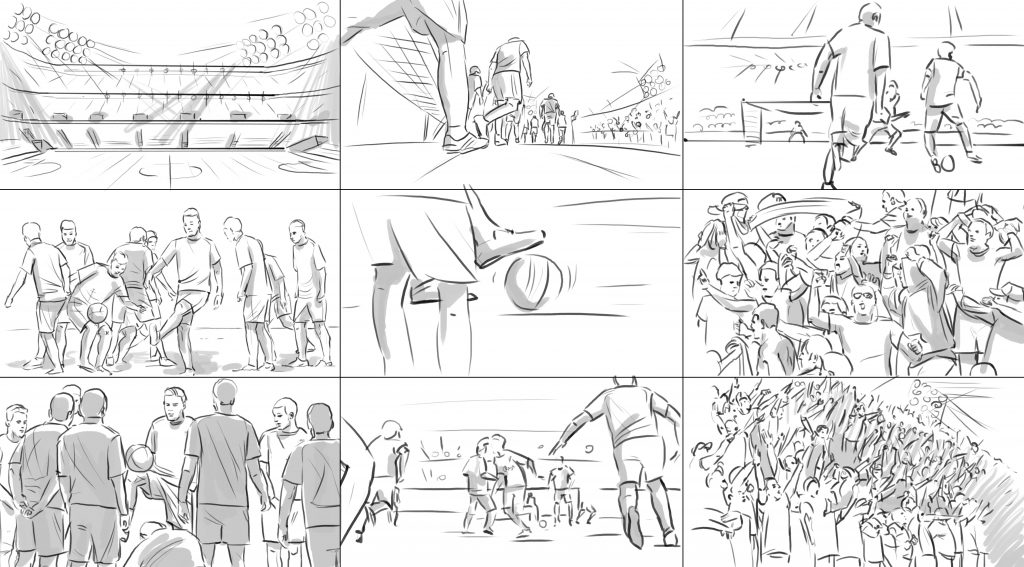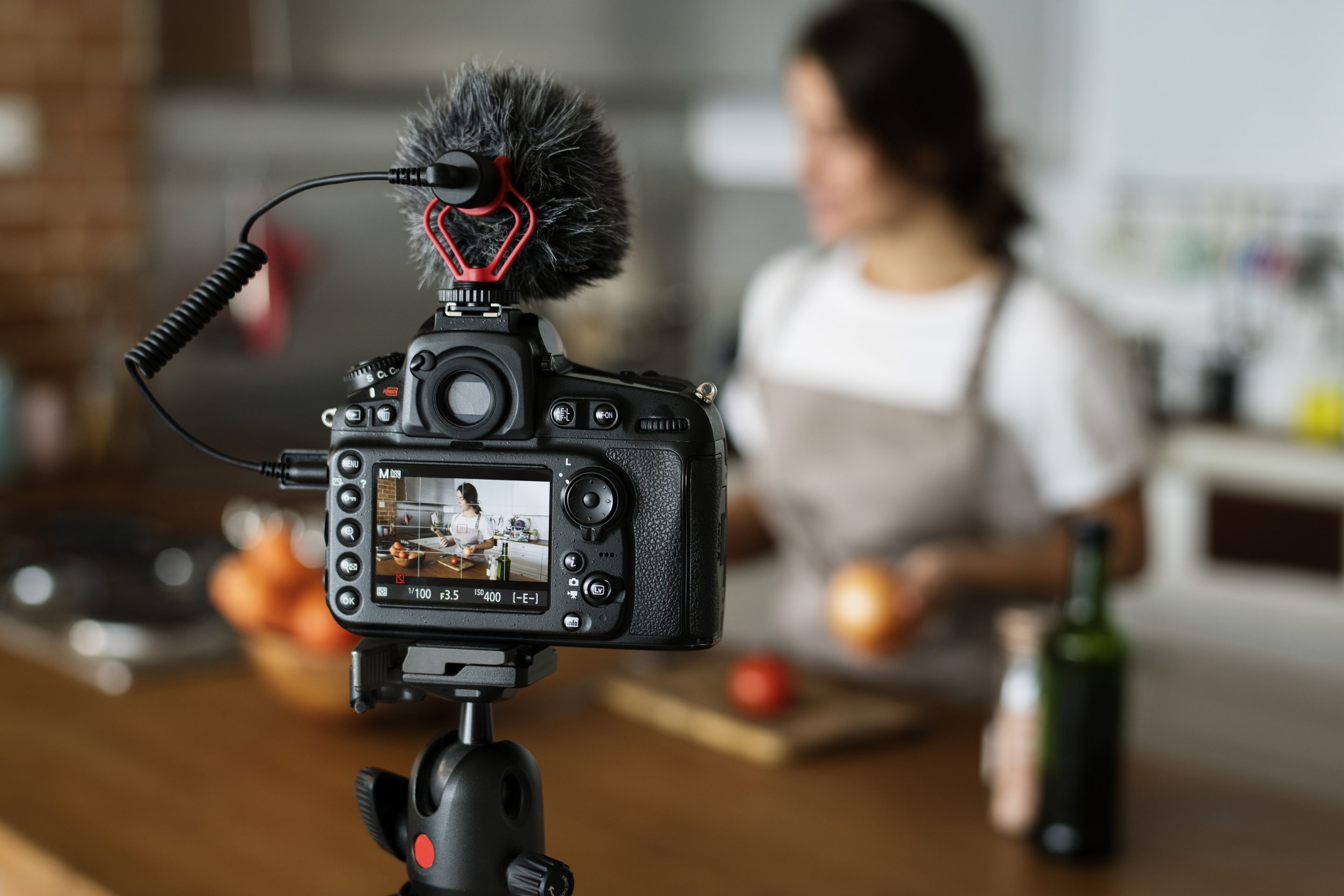Video content is a powerful tool for online storytelling and digital marketing, but if you just start creating content without planning, you may find it more challenging than anticipated. To help ease the burden, I have compiled 10 steps to help your video pre-production process go smoothly.
10 Steps to Follow Before Shooting Your Marketing Video
1. Establish The Overall Cost
Cost should always be the first thing you think about when you are creating video content. Video marketing can quickly become expensive if you are not careful. If you don’t set a realistic budget, it can be easy to come up with brilliant ideas that will cost a fortune. Setting a budget early will save you money in the long run and help ground your ideas in reality.
As Single Grain explains, “Knowing your budget ahead of time also lets you narrow down what you can and cannot do for any given video project, and eliminates a lot of second-guessing.”
2. Clarify The Purpose/Message
One size does not fit all when it comes to video content. Just like with blog articles and newsletters, you will need to create multiple videos if you want to discuss different topics. It is not possible to fit in all the topics you want to go over in one video, so make sure you define a specific purpose for the video before you start creating it.
According to Image Seven, “If you don’t know what you are trying to communicate through your video, then you shouldn’t be making one. You should start with the message you wish to communicate and then decide that a video will help communicate that message.”

3. Define Your Audience
Your audience that interacts with your brand on a daily basis and the ones that watch your video content may not be one and the same. Video marketing is an excellent way to reach a new audience. Look at your established purpose and message, and then think about who is most likely to engage with the video.
According to Bold Content, “The intended audience for your video will affect a number of elements of your video. Video content intended for a younger audience may be markedly different to one for an adult audience. A technically sophisticated audience may require a more detailed video. An audience which is unfamiliar with your product may prefer a video which is more entertaining to grab their attention.”
4. Write a Script and Storyboard

While the scriptwriting process can be tedious, having a successful script will help your video creation process go smoothly.
As Single Grain explains, “Too often, teams write the script and execute without critiquing, revising and critiquing some more. Think about it: It’s tricky to piece together a script of what you want to say without having input from other members on your marketing team who speak to customers individually. Taking the time to get professional input—whether that’s from professional video scriptwriters or the video marketing agency you’re working with—at this stage of pre-production is an extremely worthwhile investment!”
Storyboards are the representation of the written script drawn in phases. As Single Grain explains, “Just as a video script is an indispensable pre-production tool, a storyboard is invaluable as an efficient way to visualize the shoot before it happens. Why? Because the storyboard takes the script and verifies its possibility by taking the images in your head and putting them on paper.”
Storyboarding will help answers questions like:
- Is there natural light or do we need lighting equipment?
- Do we have a set location?
- Do we have the proper tools to complete the shots we want?
- Do we have the right talent for this script?
- Is the location applicable for filming?
5. Make A Shot List
Shot lists are the combination of the script and the storyboard. Shot lists include specific details one shot at a time. They can include the location, the scene and shot number, who is in the scene, where the audio and lighting are coming from and a short description of what you hope the shot to be. This can be used as your step-by-step guide for the actual day of shooting.
6. Overestimate The Time You Need
Video shoots can be time-consuming. From arrival to tear down, it can be hard to know exactly home much time you need. Give yourself more time than you think you could ever need.
As Single Grain explains, “Underestimating production time is just as bad as overestimating resource capacity. You don’t want to rush through one section of your storyboard because you haven’t allocated enough time to film it—and potentially need more time to re-film, which means renting equipment and getting the actors back again.”
One thing you may hear while you are working on a video shoot is, “We can fix it in post!” Often, this is not true. While video editing is an amazing tool that can elevate your video, it is not magic. Too often people rely on video editing to clean up unfocused video, poor lighting and more. However, taking the time in the moment to get the shot the best it can be will pay dividends in the long run.
7. Determine Equipment Needs

The type of equipment you need will vary depending on the size of your shoot. The basics of what to have on-hand during your shoot are:
- Camera (either DSLR or good quality phone camera)
- Tripod
- Camera bag
- 3-point lighting set
- Camera light
- Microphones
If you are curious about what other equipment you may need, consult the link below from Desktop Documentaries.
When you are looking at equipment, make sure to do an in-house inventory check before you purchase anything. Make sure you don’t have any extra equipment laying around that could be of use. Depending on your video marketing budget, you may want to consider renting equipment instead of purchasing it outright. Camera equipment can easily get expensive to purchase, but can be rented for much more reasonable prices.
8. Determine The Shoot Location
Your location is a huge factor in your video creation process. You can either do your shoot on location, such as a beach or a park where you have more variables to contend with, or you can film in a studio, which is a more controlled environment designed for filming.
If you don’t have access to a studio location, you can rent a space at an hourly rate. Shooting on location can seem appealing but requires a lot of additional work for you and your staff.
If you are shooting outside on location you have to watch the weather; rainy or windy days can wreck a video shoot. Shooting on location will also put you at a disadvantage with lighting, which can change drastically throughout the shot, throwing off the composure of your video. There are also a lot more variables that you cannot control when you are shooting on location, like bystanders in the background that may be a distraction for the shot. Renting a studio will cost additional money, but shooting on location can quickly evolve into a multiday shoot, which will end up costing you more.
9. Visit The Location Ahead of Time
After you decide on your location for filming, make sure you visit it ahead of time. Even if you decide to film in a studio, it is still a good idea to visit the location before filming. Visiting a studio will allow you to see how the lighting is set up, where cameras can be set up and where outlets are.
With outdoor shots, you are once again at the whim of the weather, but visiting them beforehand (ideally at the same time of day you’ll be shooting) will allow you to visualize how your shots will look and where you may need to place additional lighting. If you are shooting at a location like an office or a business, you will most likely need to film after hours, so make sure you consider that when you are selecting the shots you want.
10. Remember, Video Marketing is Worth It!
Video marketing is overwhelming. There are a ton of factors that go into making a successful video, but if you are feeling stressed about the process, remember it is worth it!
According to Single Grain,
- 97% of marketers say video has helped increase user understanding of their product or service
- 76% say it helped them increase sales
- 47% say it helped them reduce support queries
- 76% say it helped them increase traffic
- 80% of marketers say video has increased dwell time on their website
Creating video content is complicated, but can be highly effective for your brand. Making sure you have your bases covered will save you time and money, and make the overall process much more enjoyable.
Contact Us!

Do you still have questions about the content creation process? Contact us today for a complimentary consultation with our CEO, Erika Taylor Montgomery. She’d be happy to share more about how this video marketing, as well as other content marketing and public relations strategies, can be beneficial for your business!
Special Offer:
Sign up for a complimentary consultation during December and receive an Annual Marketing Planning Guide valued at $475! We offer a 30-minute phone consultation with our CEO, and can answer your questions and discuss your specific marketing needs - no strings attached. Call 408-218-2391 or contact us today to arrange your consultation!

